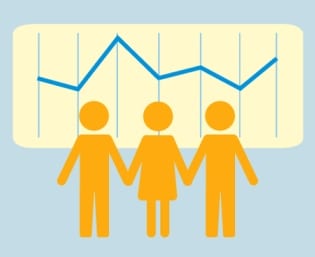
Sarcomas are an extremely rare set of cancers that affect the bone and connective tissues such as muscle, bone, fat, cartilage, tendons, blood vessels, and the like. With the launch of the new Sarcoma Community, 23andMe hopes to recruit a research cohort that will serve as a platform for research investigations into the causes and treatment of sarcomas.
Current and former sarcoma patients may participate by being genotyped and completing surveys about their disease and treatment response through the 23andMe web-based research platform. In return for their participation, they will receive access to the full 23andMe experience at no charge. For more information, please go to https://www.23andme.com/sarcoma.
Dr. Robert Maki, MD PhD, a sarcoma medical oncologist, has provided more information about sarcoma to help us raise awareness about this disease:
In 2010, some 13,000 cases of sarcoma will be seen in the United States. This is an extremely small number compared to the total of more than 1.4 million people who are diagnosed with cancer each year in this country. The small number of cases seen, the diversity in the biology of each type, and the variable anatomic site in which each tumor arises, have made understanding of sarcomas difficult. Research into the causes of and best treatments for each type of sarcoma is a high priority.
Diagnosed early, sarcomas are eminently curable. But when they are diagnosed at later stages when the tumors are large or have traveled beyond where they started (metastatic disease), there is a lower chance for a cure.
Treatment depends on the type of sarcoma involved, its site of origin, and whether the tumor has spread. For a “primary” sarcoma (an isolated tumor that has remained in the place it arose), surgery is nearly always a necessary part of treatment. Radiation is used when tumors are large, either before or after surgery, with the hopes of preventing recurrence. For certain types of sarcomas (Ewing sarcoma, osteosarcoma and rhabdomyosarcoma, for example) chemotherapy is also used to help prevent recurrence.
After initial treatment, if a sarcoma returns, the next steps taken depend on the specific clinical situation. In some cases, the tumor can once more be cut out surgically. For others, radiation can be used to control the tumor. If a sarcoma has spread, chemotherapy is the first choice treatment. These drugs, which are taken by mouth or through an I.V., can travel throughout the body to attack all sites of the disease at once.
Clinical trials are always in progress looking for new treatments for sarcomas. Medical oncologists often test new chemotherapy agents in people who have had recurrences of sarcoma that have proven unresponsive to other treatments. Some of these drugs then go on to be assessed for their ability to improve the cure rate among people suffering from their first bout with the disease.
There are almost surely genetic factors involved in sarcoma, but we researchers do not have a good handle on these yet. We expect the next few years to be important in helping oncologists determine genetic and non-genetic risk factors that predispose people to developing sarcomas.
Patients with questions regarding the genetics of their cancers are encouraged to ask their physicians about how best to address the risk to themselves and their family members.